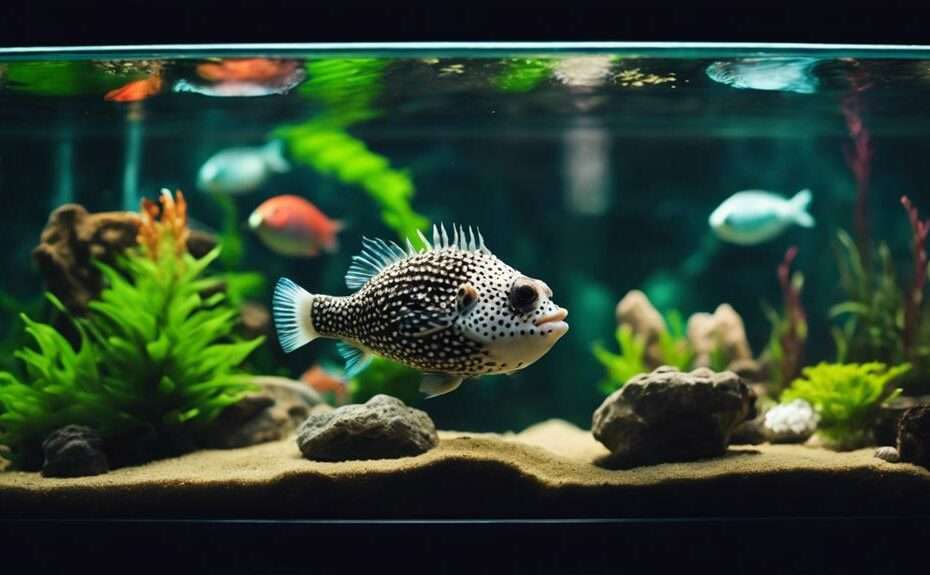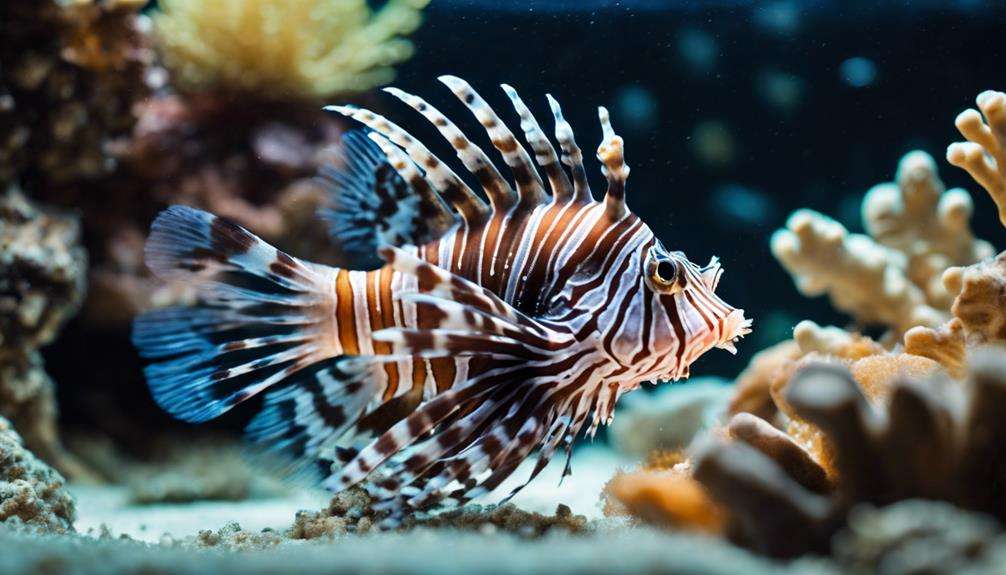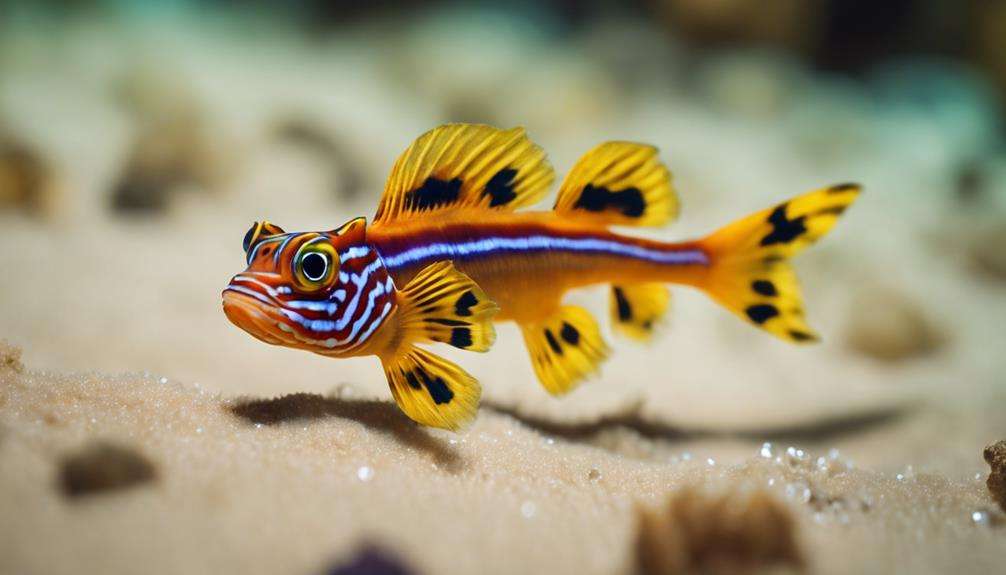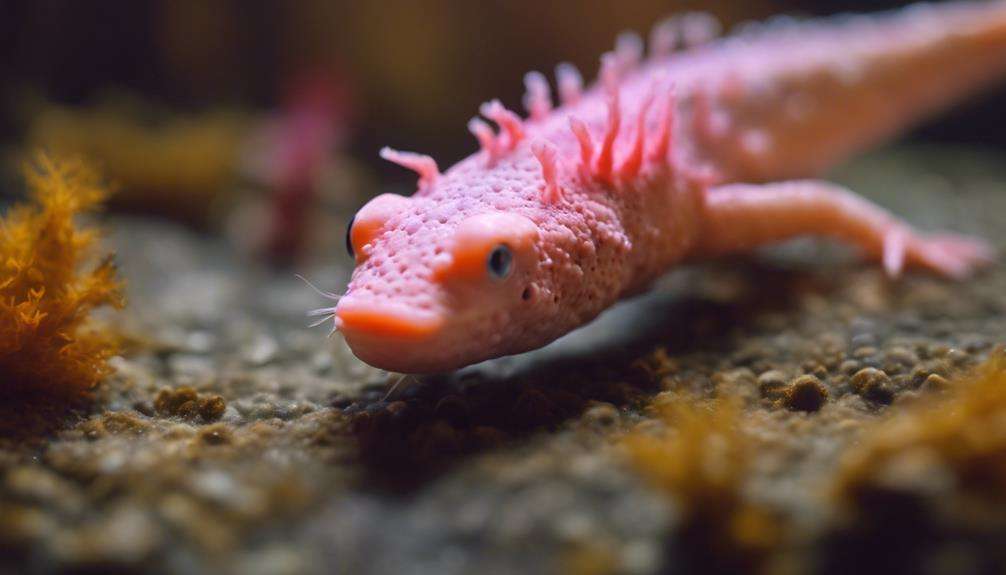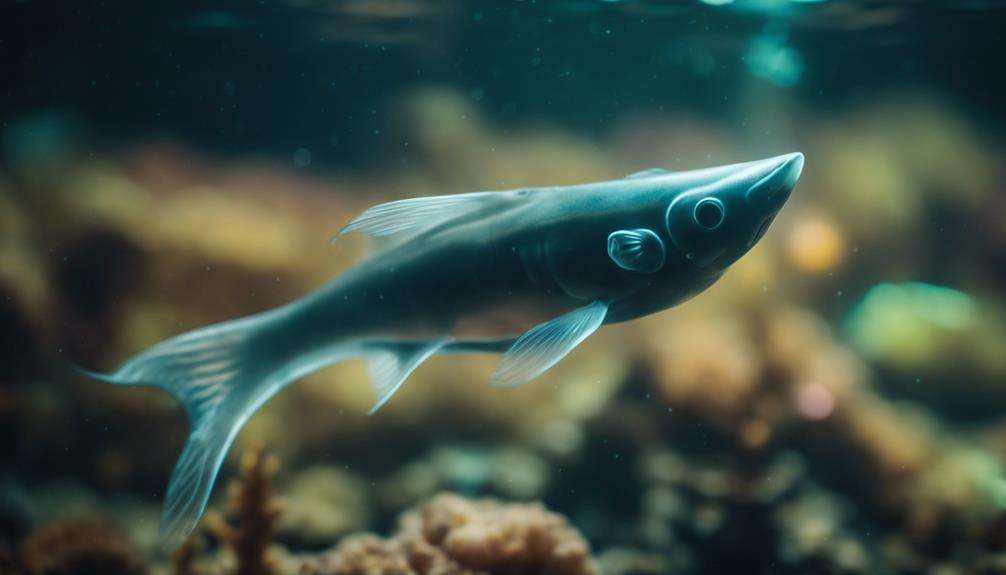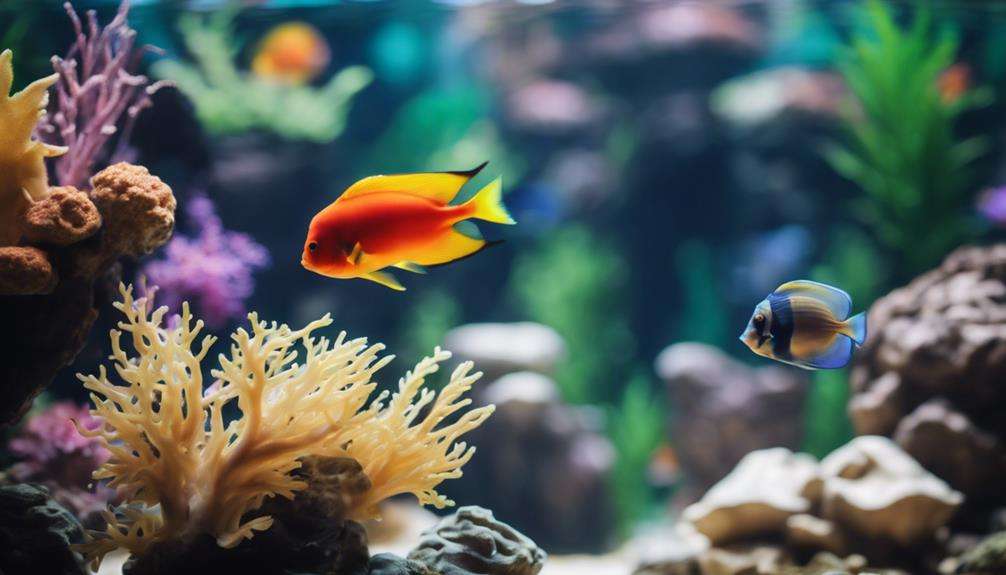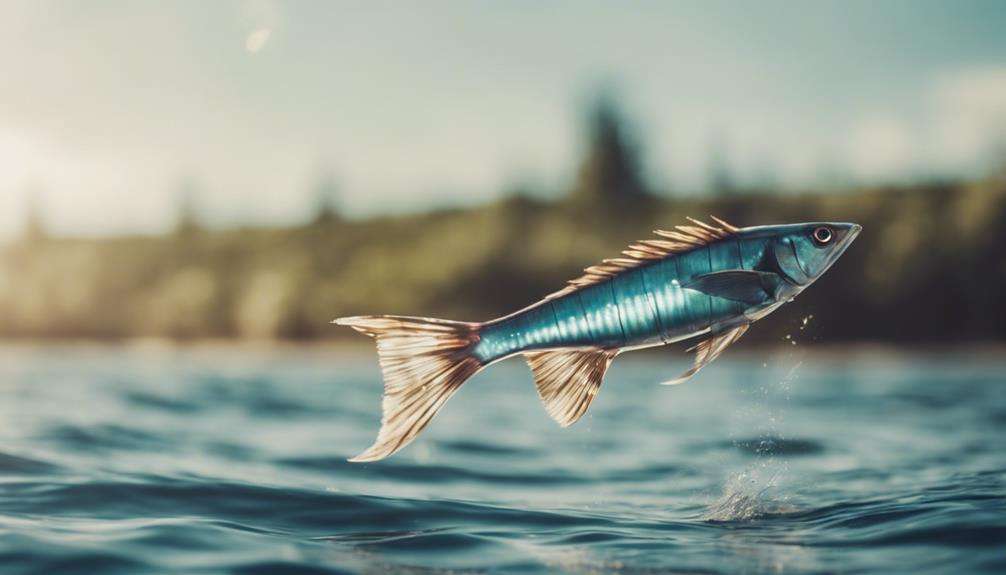If you're curious about the best tank setups for your unique pufferfish pets, you might be wondering how to create an environment that suits their specific needs. From Nano Puffers to Community Puffers and Ambush Puffers, each type requires a tailored setup to thrive.
But what are the key elements that make these tank setups ideal for your pufferfish companions? Let's explore the intricacies of these setups to ensure your pufferfish enjoy a habitat that mirrors their natural behaviors and requirements.
Key Takeaways
- Provide appropriate tank size and habitat features based on the specific pufferfish species.
- Tailor diets to match the nutritional needs of each pufferfish type for optimal health.
- Create separate territories or hiding spots to accommodate territorial behaviors.
- Select tank mates carefully to ensure compatibility and minimize stress in the tank environment.
Ideal Tank Setup for Dwarf Pufferfish
When setting up an ideal tank for Dwarf Pufferfish, ensure you provide a minimum of 10 gallons of water, ample plants, and hiding spots for their comfort and well-being. Dwarf puffer fish, also known as pea puffers, are small freshwater species that require a well-equipped aquarium to thrive. These tiny puffers are full of character and need a setup that caters to their specific needs.
In their tank, maintain a temperature range of 74–82°F (23–28°C) and slightly acidic to neutral pH levels. To mimic their natural habitat, incorporate live or frozen foods like bloodworms and brine shrimp into their diet. Remember, these puffers can be territorial, so it's crucial to provide separate territories within the tank.
Regular water changes are essential for maintaining good water quality, ensuring the health and vitality of your dwarf pufferfish. By creating a suitable environment with the right food, water conditions, and space, your dwarf pufferfish will flourish in their freshwater home.
Customized Habitat for Amazon Puffers
To cater to the specific needs of Amazon puffers, a well-equipped aquarium of at least 30 gallons is essential for their comfort and thriving. These vibrant puffers thrive in water temperatures between 72-82°F and a pH level of 6.0-8.0, mimicking their natural habitat. Here are some key elements to consider when customizing a habitat for your Amazon puffers:
- Tank Size: A minimum of 30 gallons is necessary for these active swimmers.
- Water Temperature and pH: Maintain temperatures between 72-82°F and a pH level of 6.0-8.0 for their well-being.
- Distinctive Appearance: Admire their golden yellow bodies with unique black splotches.
- Dietary Needs: Ensure good dental health by providing Repashy gel food to prevent overgrown teeth.
- Habitat Features: Create a comfortable environment with hiding spots and plants that mimic their natural surroundings.
Specialized Tank Design for Mbu Puffers
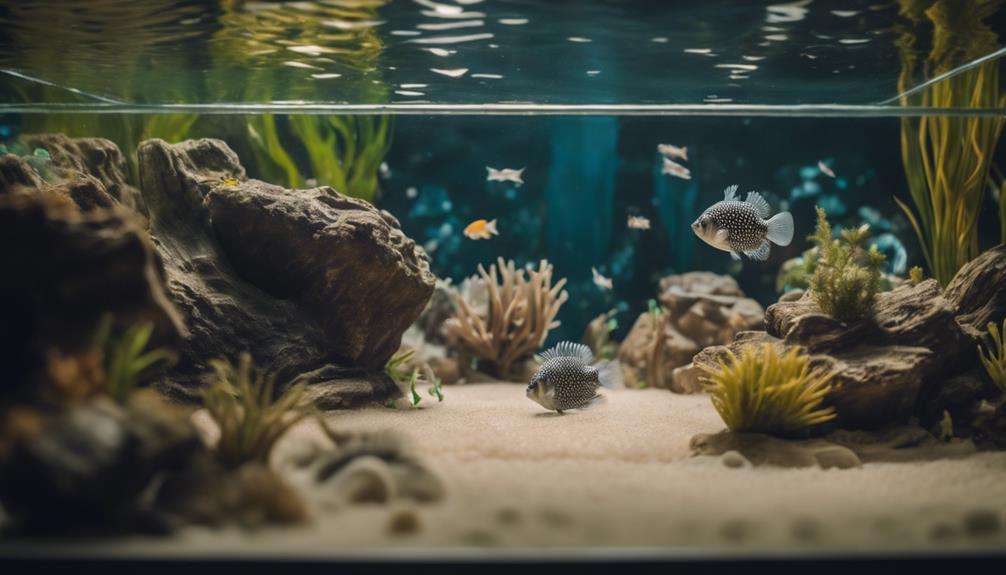
A spacious tank design tailored to the specific needs of Mbu puffers is essential for their well-being and comfort. Mbu puffers, known for their large size, require a tank that's at least 6-8 feet long to thrive.
Live aquarium plants serve as excellent visual barriers in their tank, providing a sense of security for these territorial puffer fish. When it comes to feeding requirements, a balanced diet for Mbu puffers should include clams, mussels, and crustaceans.
As they can be territorial towards their own kind, it's crucial to choose quick tank mates to avoid aggression. To cater to their territorial behavior and need for hiding spots, creating a tank with ample hiding spots and visual barriers is recommended.
Frequently Asked Questions
What Is the Best Puffer Fish to Have as a Pet?
For the best puffer fish as a pet, consider factors like experience level, tank size, and species characteristics. Dwarf or Pea Puffers are great for beginners, while Green Spotted or Mbu Puffers appeal to seasoned aquarists.
Can Pufferfish Be Kept as Pets?
Pufferfish care involves meeting specific needs like diet and tank size. Owning a pufferfish can be rewarding due to their unique behavior. Tank mates, decorations, and water conditions impact their health. Understanding these factors ensures a thriving pufferfish.
What Do Puffer Fish Like in Their Tank?
You want your pufferfish to feel like royalty in their tank. Fill it with cozy caves and lush plants, keep water clean and cozy, and make sure the lighting sets the mood. Happy fish, happy life!
Can Different Types of Puffer Fish Live Together?
You shouldn't house different types of puffer fish together due to aggression, territoriality, and potential harm. They prefer solitary living to thrive. Keeping each puffer in its own tank ensures their well-being, reduces conflicts, and promotes a healthy environment.
Conclusion
In conclusion, remember that a happy pufferfish is a healthy pufferfish. As the saying goes, 'A stitch in time saves nine,' so invest the time and effort into creating the perfect tank setup for your unique pet.
By tailoring the environment to their specific needs and behaviors, you can ensure a thriving and vibrant aquatic habitat for your pufferfish companion.
Happy fishkeeping!
